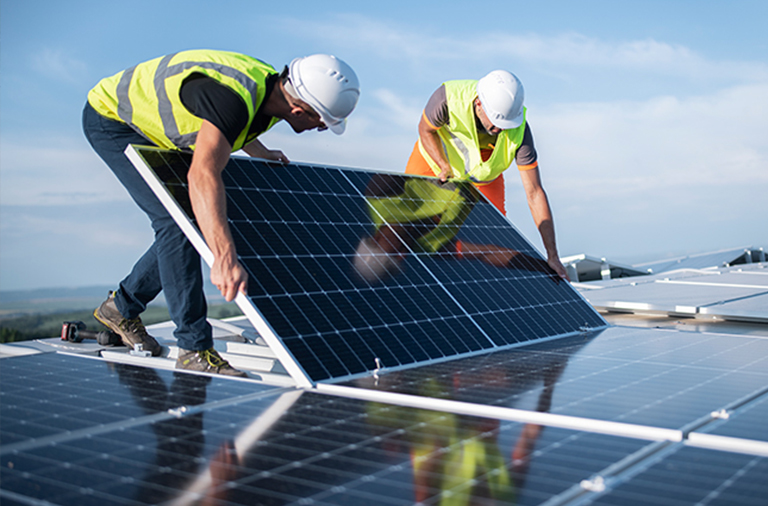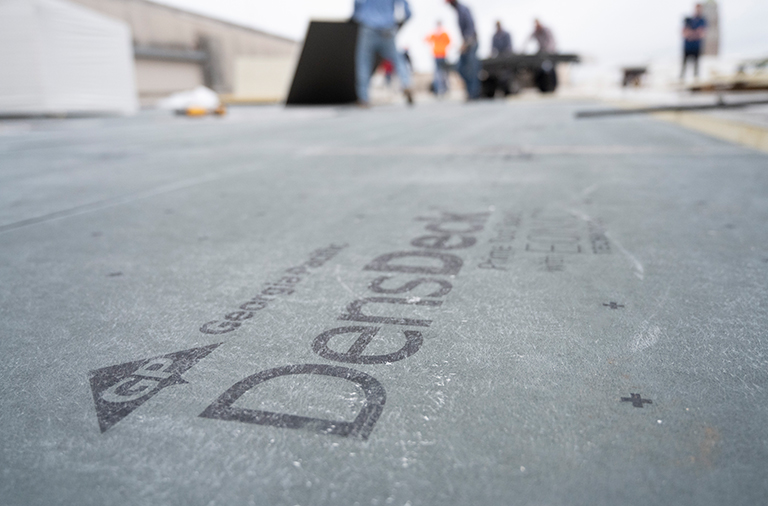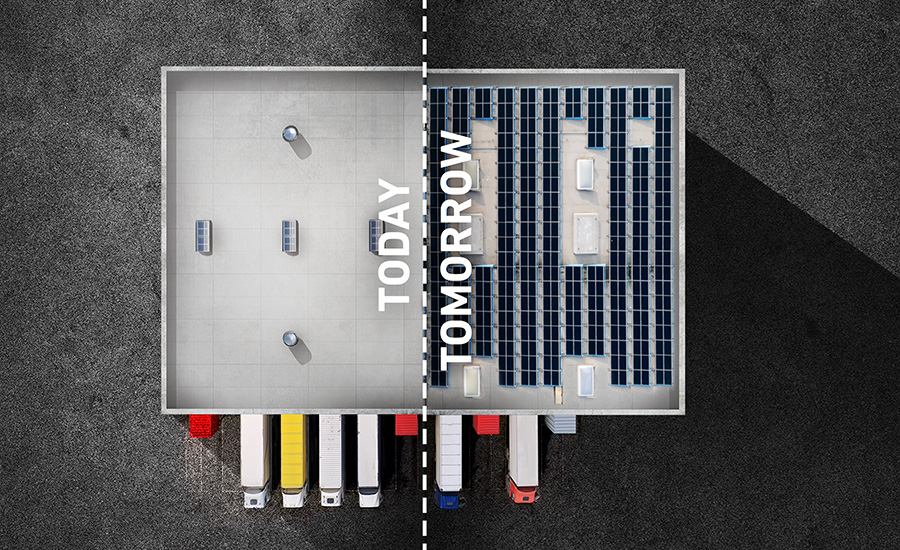The push for energy efficiency has brought about significant solar tax credits and, in turn, a rise in solar installations. However, it also comes with tightening energy codes and risks that building owners, contractors and architects should be aware of. Using a durable, noncombustible cover board in your roofing systems can help get your roofs more solar-ready.

The Push for Energy Efficiency Means Solar Investments
Energy efficiency can be an effective way to combat climate change, lower energy costs and help businesses improve their bottom lines. However, the drive for efficiency comes with updated energy codes and risks that commercial building owners, architects and contractors should be aware of.
There are also incentives for building owners laid out in the Inflation Reduction Act, or IRA. As part of a substantial effort to combat climate change in the coming decade, the IRA includes several potential benefits for commercial buildings. The IRA aims to reduce the nation’s carbon footprint by 40 percent from 2005 levels by 2030. It provides several avenues to achieve that goal, including extending the solar investment tax credit for commercial solar panel systems. The solar tax credit is worth 30 percent of total project costs. It will be reduced in 2033 and 2034 and then eliminated for most commercial solar projects in 2035.
This considerable incentive is spurring building owners to consider adding solar to the mix, now or in the future. Often, rooftops are a desirable location for solar arrays—it’s a way to maximize the building footprint without using additional land, especially in areas where space comes at a premium. Rooftops are also open to the sky and less prone to vandalism.
“We are seeing an increase in roofs being installed with solar and being designed as solar-ready,” says Ron Harriman, president of Benchmark Inc., a roofing consultancy based in Cedar Rapids, Iowa. “We are also seeing an increase in projects where solar is being considered and the previously constructed roofs are not solar-ready. That presents a real dilemma for owners who are intent on installing rooftop solar.”

Solar Panels Require Durable Roofing Assemblies
Not all class-A roofing assemblies are up to the solar challenge. If not properly outfitted, a commercial roof may not work well for a photovoltaic installation. Though the solar-ready concept is becoming more common, what does it mean for buildings? The National Renewable Energy Laboratory (NREL) defines solar-ready building design as “designing and constructing a building in a way that facilitates and optimizes the installation of a rooftop solar photovoltaic (PV) system at some point after the building has been constructed.”
For roofing systems, it’s important for you to prioritize several factors when it comes to potential solar installations. They include durability, resilience and fire resistance. The frequent need for solar roof inspections and maintenance can increase the amount of foot traffic and the risk of dropped tools.
Installing solar panels also means asking your roof to do more heavy lifting. Your roofing system needs extra support to handle the weight of the panels plus any abuse experienced during installation and upkeep. You can add support by using a high-quality gypsum cover board like DensDeck® Roof Board. It provides a rigid substrate while enhancing the compressive strength of your roof.
“Commercial rooftop solar systems are installed on a variety of roof system types, including single-ply thermoplastics, thermosets, modified bitumen membrane and metal roof systems,” Harriman explains. “Depending on the type of roof system installed, punctures can happen from roof traffic when servicing the rooftop HVAC and solar components. Because the traffic becomes concentrated in the aisles between panels, the roof is far more susceptible to damage. A rigid cover board improves the system’s durability and strength, reducing the likelihood of puncture.”
The Threat of Fire
When a roof serves as the platform for an expensive solar array, and protects the building itself, the need for resilience becomes even more important. The energy generated by solar installations can increase the risk of fire. A quality cover board can provide additional resistance to weather-related impacts and create a fire-resistant barrier. DensDeck® Roof Board is noncombustible per ASTM E136, meaning it won’t burn.
“Resilience to extreme events, such as fire, wind and hail, is an important part of the design process,” Harriman says. “Depending on the building’s location, it may not be a matter of if, but when an event will occur during a lifespan of 20 or 25 years. Fire is something that should receive special consideration. Resilience should incorporate review of the complete system, including deck, insulation, cover board, membrane and method of attachment. Gypsum cover boards offer very high resilience to fire and, because of the extremely hard surface, protect the membrane from punctures.”

Roof Life Cycle
Any roof should be designed for staying power, but solar-ready roofs need to meet or exceed the life of the PV array to avoid unnecessary labor and costs down the line.
“Fundamentally, it is wise that the life cycle of the roof is aligned with the life cycle of the solar array,” Harriman says. “It is unfortunate when the roof needs to be replaced in the mid-life [sic] of the array. This triggers the need for the solar array to be decommissioned and removed from the building to allow the roof system to be replaced. While not impossible, it is costly and should be considered in the payback analysis. It is best to install the solar array shortly after the roof is installed and have a robust roof system with a slightly longer service-life potential than the solar system.”
There are different types of cover boards on the market that can contribute to a roof’s lifespan and endurance. When building owners invest in rooftop solar, they should also be investing in a roofing system with superior longevity.
“When installing a solar-array system, cover boards are a very important component to consider in the resilience design of the overall system,” Harriman says. “One must keep in mind that cover boards are manufactured using different products, so the benefit of the cover board is dependent on that product. As an example, gypsum cover boards have very high puncture[-] and fire-resistance qualities.”
DensDeck® Roof Board has a gypsum core with fiberglass mat facers for increased puncture resistance.
It’s easier to adapt to changes in energy efficiencies if everyone on the building team thinks beyond short-term impacts and costs. Consider what today’s decisions will mean for tomorrow. Adding a cover board to your roofing systems now is a small investment that can pay large dividends in the future.
To further explore the benefits of DensDeck Roof Board, please visit DensDeck.com/StopCallbacks.
www.roofingcontractor.com
https://www.roofingcontractor.com/articles/99140-how-to-approach-the-solar-roofing-boom














